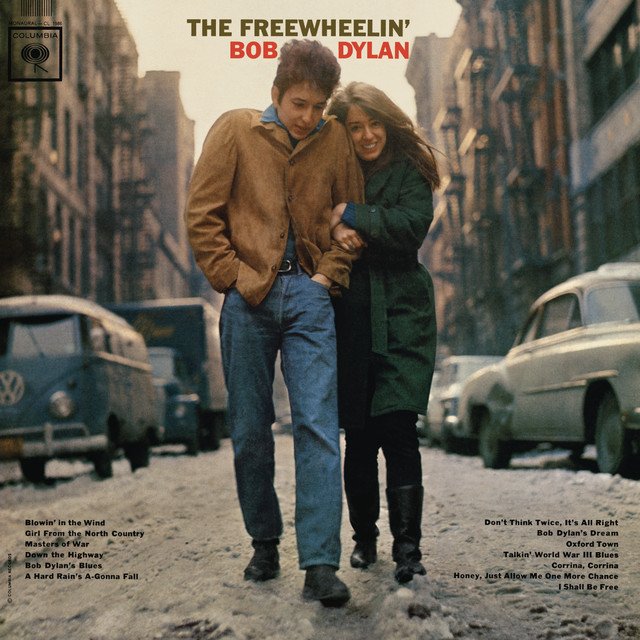Since its release in 1963 by the esteemed Bob Dylan, Blowin’ in the Wind has woven itself into the global consciousness, remaining a seminal anthem that begs profound questions through its stirring lyrics. Characterised by its acoustic simplicity—just Dylan’s voice, guitar, and harmonica—the song quickly rose to emblematic status, capturing the ethos of the ’60s civil rights movement.
Despite the deceptive simplicity of the tune—borrowed from the spiritual “No More Auction Block”—Blowin’ in the Wind layers questions of peace, war, and freedom, resonating through the generations. It struck a chord worldwide, particularly when Peter, Paul, and Mary lifted the song to new heights on the Billboard charts, confirming Bob Dylan’s prowess as a master songwriter.
This article delves into the origins and evolution of Blowin’ in the Wind, illuminating how Bob Dylan encapsulated the zeitgeist of an era and how the song’s perplexing inquiries, like “how many roads must a man walk down,” remain relevant today. The impact of Blowin’ in the Wind continues to resonate, earning its rightful spot in the Grammy Hall of Fame and on critics’ lists of the greatest songs ever written.
The Genesis of Blowin’ in the Wind
The creative journey of Bob Dylan’s Blowin’ in the Wind began in 1962 when he penned this iconic folk song that went on to define a generation. The song is distinguished by its clear-cut musical composition, trimmed down to the essence of its message with Dylan’s guitar and harmonica. In the backdrop of America’s civil rights movement, Bob Dylan found his muse in the echoes of historic freedom songs, taking a page from the ageless struggle for liberty. He had been particularly moved by the New World Singers, who breathed new life into songs that resonated with the fight for equality.
Blowin’ in the Wind poses a sequence of questions that chisel away at some of the most profound societal dilemmas concerning peace, freedom, and the pervasive nature of ignorance. It’s the repetition of queries, like the iconic “How many roads must a man walk down?” that urges listeners into introspection, symbolising the twisting paths of self-discovery and societal acceptance. These lyrical questions, paired with Dylan’s distinctive voice, etched the song into the collective consciousness, where it was swiftly elevated by covers from prominent artists, with Peter, Paul, and Mary amplifying its reach to a wider audience. Their version soared on the pop charts, making Bob Dylan blowin in the wind—not just a phrase but a rallying cry for change.
Dylan’s clever adaptation, together with the ambiguity surrounding the meaning of blowin in the wind, paved the way for the song to transcend its time, becoming a touchstone for the anti-war movement as well. Bob Dylan’s cryptic leanings, as evidenced by his reluctance to pin down a definitive interpretation of the lyrics to Blowin’ in the Wind, only add to the song’s mystique and enduring success. Notably, the 2021 model of Blowin’ in the Wind, recreated using Ionic Original technology by producer T Bone Burnett, emerged as a unique artefact, slated for auction at Christie’s—a testament to the song’s undiminished gravity and Dylan’s enduring legacy as the sole navigator behind who wrote Blowin’ in the Wind.
Deciphering the Lyrics
Bob Dylan’s Blowin’ in the Wind is a masterful tapestry of words that intertwines the simplicity of its music with the weight of its content, calling for societal reflection and change. Unveiling the layers of meaning within the song’s lyrics sparks an invitation for deeper understanding.
Visions of Change: The song’s rhetorical questioning, through the oft-repeated phrase “How many?” serves as a poignant call to reckon with the timescales and conditions needed for change to occur. These questions touch on themes of human suffering, willful blindness, and continual struggles for justice and freedom. They are not presented with the expectation of definitive answers but rather to prompt listeners to grapple with the issues at the heart of the human condition.
Role of the Observer: Dylan situates himself as a forlorn spectator of the world’s woes, his voice carrying a blend of sorrow and resilience. The songs’ queries, imbued with his emotive timbre, capture not just a longing for clarity but also an implicit understanding of the trials of finding solutions to persistent problems, ranging from warfare and racism to the fleeting nature of life itself.
Meaning in the Metaphorical Wind: “The answer, my friend, is blowin’ in the wind,” suggests answers to these trials are both pervasive and elusive, drifting through the air for anyone to grasp, yet never quite in hand. This paradox captures an optimism laced with uncertainty, an acknowledgment that while solutions may exist, they are not easily captured or defined.

The cultural resonance of Blowin’ in the Wind greatly contributed to its adoption as an anthem during the 1960s cultural revolution. Despite its initial release not charting, covers such as Peter, Paul, and Mary’s rendition elevated the song to a global stage, with their version reaching impressive chart positions and bringing Dylan’s impactful words to a broader audience. As subsequent artists tackled Blowin’ in the Wind, each brought their own interpretation, cementing the song’s enduring place in the social consciousness.
The influence of this heritage in Blowin’ in the Wind highlights the song’s power in representing voices fighting against systemic racism and oppression, echoing from the past into the present.
In Blowin’ in the Wind, Dylan doesn’t proclaim resolutions. Instead, through the “lyrics to blowin’ in the wind,” he crafts a timeless reflection on universal truths and the winds of change that continue to shape society, keeping the conversation on freedom, peace, and equality as relevant today as it was during the song’s inception.
You might also like:
- Decoding The Meaning Behind The Iconic American Pie Lyrics
- You Are My Sunshine: A Lyrical Journey Through Time and Emotion
- Unveiling the Hidden Meanings: A Deep Dive into Leonard Cohen’s Hallelujah
- The Hidden Meaning Behind The Song Blinded By The Light By Manfred Mann’s Earth Band
- Piano Man Lyrics: A Deep Dive into Billy Joel’s Signature Song
Bob Dylan Blowin’ in the Wind Lyrics
Verse 1
How many roads must a man walk down
Before you call him a man?
How many seas must the white dove sail
Before she sleeps in the sand?
Yes, and how many times must the cannonballs fly
Before they’re forever banned?
Refrain
The answer, my friend
Is blowin’ in the wind
The answer is blowin’ in the wind
Verse 2
Yes, and how many years can a mountain exist
Before it is washed to the sea?
Yes, and how many years can some people exist
Before they’re allowed to be free?
Yes, and how many times can a man turn his head
And pretend that he just doesn’t see?
Refrain
The answer, my friend
Is blowin’ in the wind
The answer is blowin’ in the wind
Verse 3
Yes, and how many times must a man look up
Before he can see the sky?
Yes, and how many ears must one man have
Before he can hear people cry?
Yes, and how many deaths will it take till he knows
That too many people have died?
Refrain
The answer, my friend
Is blowin’ in the wind
The answer is blowin’ in the wind


